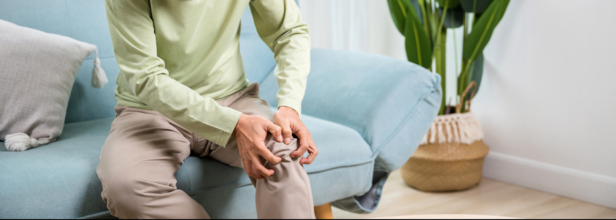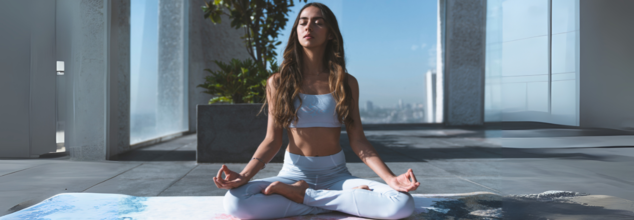
Bone Health In Winter: How To Manage Joint Pain And Stiffness
Bone Health In Winter: How To Manage Joint Pain And Stiffness
The winter season, characterized by low temperatures, has been known to heighten joint pain and stiffness in many people, especially in cases of arthritis or other joint problems. With low temperatures, blood flow to the muscles and joints reduces significantly, thus increasing stiffness and discomfort.
Winter itself may also cause indirect reduction in physical activity. This is a summary of what happens when the muscles and joints tighten up even further. If such symptoms do exist, then there are physiotherapist-directed specific interventions that help in mitigating the pain and enhance the mobility of the joint. Here is how physiotherapy can keep the joints healthy and pain-free this winter.
Why Winter Aggravates Joint Pain
In cold weather, natural drops in blood flow can limit circulation to extremities. Typically, this causes the muscles to stiffen, increases joint stiffness, and decreases the range of motion. Movement tends to become less fluid with colder temperatures because it thickens joint fluid. All these changes can make the pain worse, especially in people who are suffering from diseases like arthritis, osteoporosis, or old injuries. Being indoors and a drop in physical activities lead to more stiffness, which multiplies the pain that joints experience.
How Physiotherapy Relieves Winter Joint Pain
Physiotherapy is an excellent, non-surgical treatment that can help relieve joint pain, especially during winter. It includes movement-based therapies, manual techniques, and lifestyle advice to reduce the amount of pain felt in the joints and hence increase flexibility. Some physiotherapy methods to ensure keeping the joints healthy and active even during winter:
1. Customized Exercise Programs
Regular, controlled exercise is much needed to preserve mobility, strength, and flexibility in the joints. Physiotherapists will design an exercise program tailored for each patient based on the current state of the condition. The primary goal of this exercise is to minimize joint stress as much as possible. Simple, low-impact exercises such as cycling or swimming, or even brisk walking, are prescribed. Gentle stretching routines sustain muscle elasticity, reducing stiffness. Resistance training also helps build muscle power around the joints for additional support and stability.
2. Manual Therapy to Relieve Immediate Pain
Manual therapy, which includes joint mobilization and soft tissue massage, can provide immediate pain relief and movement in a joint. The hands-on technique enhances blood flow, relaxes tense muscles, and liberates all tension in joints to make movement easier and clearer. Regular sessions will bring flexibility, eliminate stiffness, and remove all forms of pain and discomfort, thus leaving ample scope for a healthy active lifestyle even at the depth of winter.
3. Heat and Cold Therapy
There are various heat therapies recommended to relieve discomfort caused by cold weather, especially in winter. Heat therapy increases blood flow to the affected area, reduces muscle tension, and relieves stiffness. Meanwhile, cold therapy relieves in case of inflammation or swelling since it numbs the affected area, reducing pain. Physiotherapists often advise patients to use heating pads, warm baths, or heat packs for sore joints. They should educate their patients on the timing and methods of applying hot and cold, so that they get maximal relief.
4. Electrotherapy and Ultrasound Therapy
For chronic joint pain, electrotherapy and ultrasound therapy are excellent physiotherapy intervention tools. These methods of intervention use application of electric currents or penetration of sound waves to deep tissues that can alleviate pain, swelling, and inflammation. It loosens up tension in muscles, facilitates blood flow, and hence becomes a long-term reliever for those with chronic joint discomfort.
Daily Tips to Nurture Your Joints Through Winter
Some simple practices can be added to support joint health:
-Avoid 'dressing warmly around joints' as this sometimes contributes to stiffness.
- Move or stretch actively at regular intervals throughout the day
- Keep drinking fluids to keep the joints well-lubricated.
- Alternate between rest and activity to avoid joint stiffness brought about by immobility.
Dealing with winter joint pain can be challenging, but physiotherapy is a goldmine of practical solutions to overcome discomfort and stiffness. Combining personalized exercises, manual therapy, or heat and cold therapies in the work of a physiotherapist can help protect joints and maintain an even more active and comfortable lifestyle throughout the season. With these strategies, you will enjoy a healthier, pain-free winter.

(Credit-Canva)
Relieve Your Emotional Exhaustion With These Yoga Poses
Being emotionally overwhelmed can be difficult to deal with. We all have such days when you are exhausted emotionally, it almost seems as if you are unable to do, even necessities. So, dealing with these issues often becomes the problem of how resilient you are and what tools you have learned. Here's where physical activities comes in. Harvard Health Publishing explains that exercising helps us reduce the levels of stress hormones such are adrenaline and cortisol.
Does yoga also play a part in better emotional regulation? Yes, ‘Yoga for better mental health’ by Harvard Health Publishing explains how yoga increases the release of endorphins, which are feel good chemicals your body produce as well as supplies more oxygenated blood in your brain.
Here are some yoga poses you can try if you are feeling emotionally exhausted. Make sure you are not overexerting yourself and practice precaution while performing the poses.
Supported Bridge Pose (Setu Bandha Sarvangasana Variation)
This pose provides deep relaxation by using props to support your body. It gently releases tension held in the upper back and shoulders, areas that often tighten when we experience stress or emotional strain. The support allows the nervous system to settle, promoting a sense of calm and release. Here’s how to do it.
- Lie comfortably on a bolster, a rolled-up blanket, or pillows which ensures your back is supported and your upper back is flat on the floor.
- Take slow, deep breaths, allowing your body to sink into the support.
- Stay in this pose for about 20 breaths, focusing on releasing tension.
Low Lunge Variation (Anjaneyasana Variation)
This variation opens up the front of your body, which tends to become hunched and closed off during periods of stress. The hands supporting the head create a gentle hammock, allowing your neck to relax and your chest to open. This helps to release emotional tension and promotes a feeling of openness and vulnerability.
- Step one foot forward into a low lunge position.
- Bring your hands behind your head, interlacing your fingers to support it.
- Gently lean back, opening your chest and throat.
- Hold this pose for approximately 5 breaths, focusing on the stretch in your front body.
Pyramid Pose Variation (Parsvottanasana Variation)
This pose utilizes gravity to release tension while simultaneously opening the chest and back. The addition of Gomukhasana arms provides extra support for a gentle forward bend. This combination allows for a deeper stretch, helping to release emotional and physical tightness, and promoting a sense of calm and groundedness.
- Stand with one foot stepped back, creating a wide stance.
- Use a strap or towel to perform Gomukhasana arms, and gently lean forward from your hips.
- Hold this pose for about 8 breaths, focusing on the stretch in your hamstrings and the opening in your chest.
Little Thunderbolt Pose Variation (Laghu Vajrasana Variation)
This pose lengthens the front of the body, stretching from thighs to throat, and encourages feelings of trust and surrender. It helps to release emotional blockages and promotes a sense of vulnerability, allowing you to let go of control and find inner peace.
- Kneel on the floor, using blocks behind you for support.
- Lean back, arching your spine and allowing your head to gently rest on the blocks.
- Repeat this movement, holding the pose for about 5 breaths each time, focusing on the stretch in your front body.
Reclining Tree Pose (Supine Vrksasana)
This is a gentle hip opener and lower back release, which also allows for a deeper opening of the chest. It helps to release tension in the hips and lower back, promoting a sense of calm and relaxation, and aiding in emotional release.
- Lie on your back, bring one heel toward your inner thigh, and allow your knee to open out to the side.
- Relax your arms and breathe deeply.
- Hold this pose for approximately 10 breaths, focusing on releasing tension in your hips and lower back.
Reclining Spinal Twist Variation (Supta Matsyendrasana Variation)
This gentle twist releases tension in the spine and promotes a sense of calm and relaxation. It helps to "wring out" emotional and physical tension, leaving you feeling refreshed and renewed. This pose also helps to improve flexibility and mobility in the spine.
- Lie on your back, drop your knees to one side, and turn your head in the opposite direction.
- Repeat this movement on the other side, holding each twist for a comfortable duration.
- This helps to release tension in your spine and promote relaxation.
Supported Legs Up the Wall Pose (Supported Viparita Karani)
This pose transforms feelings of pressure into softness, promoting deep relaxation and calm. It helps to relieve stress and anxiety, and promotes a sense of peace and tranquility. This pose is particularly effective for calming the nervous system and promoting restful sleep.
- Lie on your back, place a block or bolster under your hips, and raise your legs up the wall or toward the sky.
- Hold this pose for 3-5 minutes, allowing your body to fully relax and release tension.

Credits: Canva
These Are The Top 10 Fittest Cities Of America
There are many cities in the United States, however, not all of them are fit. In fact, the prevalence of obesity among adults aged 20 and older in the US was 40.3%. Severe obesity has affected 9.4% of adults, notes the Centers for Disease Control and Prevention (CDC). This is why the American College of Sports Medicine's (ACSM) 2024 American Fitness Index analyzed and ranked the 100 largest cities the United States to assess cities' overall fitness. The index was based on 33 fitness indicators. It considered factors like fruit and vegetable consumption, exercise habits, overall personal health, access to parks, playground, and recreational centers.
The ACSM ranked these 10 cities as the fittest of all
10. St Paul, Minnesota
At number 10th, we have St Paul. It was a population of 303,176 and has the most baseball diamonds per 10,000 residents of the 100 cities included in the report.
9. Irvine, California
This is a city in Orange County, which has ranked at the 9th for the US fitness index. It has a population of 313,685 and around 79% of the residents have exercised previous month. Out of them, 57.2% have also met the guidelines set for aerobic activity as per the American College of Sports Medicine and the CDC.
8. Atlanta, Georgia
Atlanta also joined the top 18 list at number 8 position with a population of 499,127. The city also performs well in regard to its citizens' health behaviors, with a high percentage of residents exercising in the last month. The citizens here also ranked highly for living within 10-miunte walking distance to a park.
7. Denver, Colorado
At seven, we have Denver, with the population of 713,252. It has also performed well with citizen's healthy behavior. 81.5% of its population exercised in the previous month.
6. Minneapolis, Minnesota
Second time in a row we have Minnesota, with its city Minneapolis at rank 6. It has a population 425,096. It is also in the index' highest ranked city for Bike Score, which measures whether a location is good for biking based on its bike infrastructure, geography and share of bicyclists. The city also ranks high for having parks within a 10-minute walk and for having a high percentage of residents who have exercised in the previous month.
5. Madison, Wisconsin
It has a population of 272,903 and the residents are mostly in good shape, reveals the survey. 55.1% of its residents are in excellent or very good health and 84.7% of its residents have exercised in the past month.
4. San Francisco, California
California is also making its mark the second time on the list. This time, it is with its 4th fittest city with the highest-ranked walk score among the 100 cities analyzed. It has a population of 808,437 and is the city with the lowest obesity rate. The rates are at 15.8% and 99% of its residents live within 10-minute walk to a park.
3. Seattle, Washington
It has a population of 749,256 and it prioritizes well-being. This is why it has earned the highest personal health ranking, which examines what people are doing individually to get and stay healthy.
2. Washington, D.C.
It has a population of 671,803. The city ranks first for the percentage of its population that consumes two or more fruits a day.
1. Arlington, Virginia
The first one to top the list is Arlington. This is for the seventh time in the row that Arlington has been ranked the fittest US city as per the American Fitness Index. It has ranked in top 10 in the 16 out of the 33 indicators. It has a population of 234,000. It has ranked best among the community and environment category, including for people exercising in the precious month, people sleeping 7+ hours a day, and the percentage of residents who smoke or live 10-minutes away from the park.

(Credit-Canva)
Not Just Gym These Yoga Poses Can Build Your Arm Strength Too
When it comes to building arm strength, people instantly turn to gym and strength training first, but there's another way to get strong- yoga. Yoga is a great way to build arm and shoulder strength, and you don't need any weights. Instead, you use your own body weight to make your muscles stronger, just like you do with weights. Plus, yoga gives you other good things too, like better flexibility, more energy, a calm mind, and better focus. So, if you want to get strong arms and shoulders without lifting weights, yoga is a great choice.
Plank Pose (Phalakasana)
Imagine holding a straight line with your body, like a board. This pose makes your arms, shoulders, and wrists strong. It also helps your belly and back muscles. You start on your hands and knees, then move your feet back and hold steady. Try to keep your body straight for about 30 seconds.
Side Plank Pose (Vasisthasana)
This is like a regular plank, but you do it on your side. It's great for making your arms and the sides of your body strong, and it's easier on your back. You start in a plank, then turn to one side, balancing on one hand and foot. Hold for 12-15 seconds, and then do the other side.
Dolphin Pose (Ardha Pincha Mayurasana)
This pose uses your forearms to build arm strength. You start on your hands and knees, then put your forearms on the floor and lift your hips up. Your body will look like an upside-down "V". Relax your neck and hold the pose for a few deep breaths.
Upward Plank Pose (Purvottanasana)
This pose lifts your whole body off the ground, which makes your arms and shoulders very strong. You sit with your legs out in front, put your hands behind you, and push up with your arms and feet. Hold this pose for a few breaths.
Three-Legged Dog Pose (Eka Pada Adho Mukha Svanasana)
This pose makes your arms stronger and stretches your back and legs. You start in downward-facing dog, which looks like an upside-down "V", and then you lift one leg up high. Hold it for a few breaths, and then do the other leg.
Upward Facing Dog Pose (Urdhva Mukha Svanasana)
This is a backbend that strengthens your arms and stretches your chest and belly. You lie on your stomach, put your hands under your shoulders, and push up, lifting your chest and thighs. Breathe deeply and hold the pose.
Cobra Pose (Bhujangasana)
This pose is similar to the upward-facing dog, but it's easier on your shoulders. You lie on your stomach, put your hands under your shoulders, and push up, but keep your elbows slightly bent. Hold the pose for a few seconds and breathe.
Bow Pose (Dhanurasana)
This pose stretches your whole front body and makes your arms strong. You lie on your stomach, bend your knees, grab your feet with your hands, and lift your chest and thighs. Hold the pose for a few deep breaths.
Cooling Down and Relaxation
After doing these poses, it's important to let your body relax. You can lie still on your back in Corpse Pose, or rest in Child’s Pose, which is especially good for stretching your arms and releasing any tension.
© 2024 Bennett, Coleman & Company Limited

